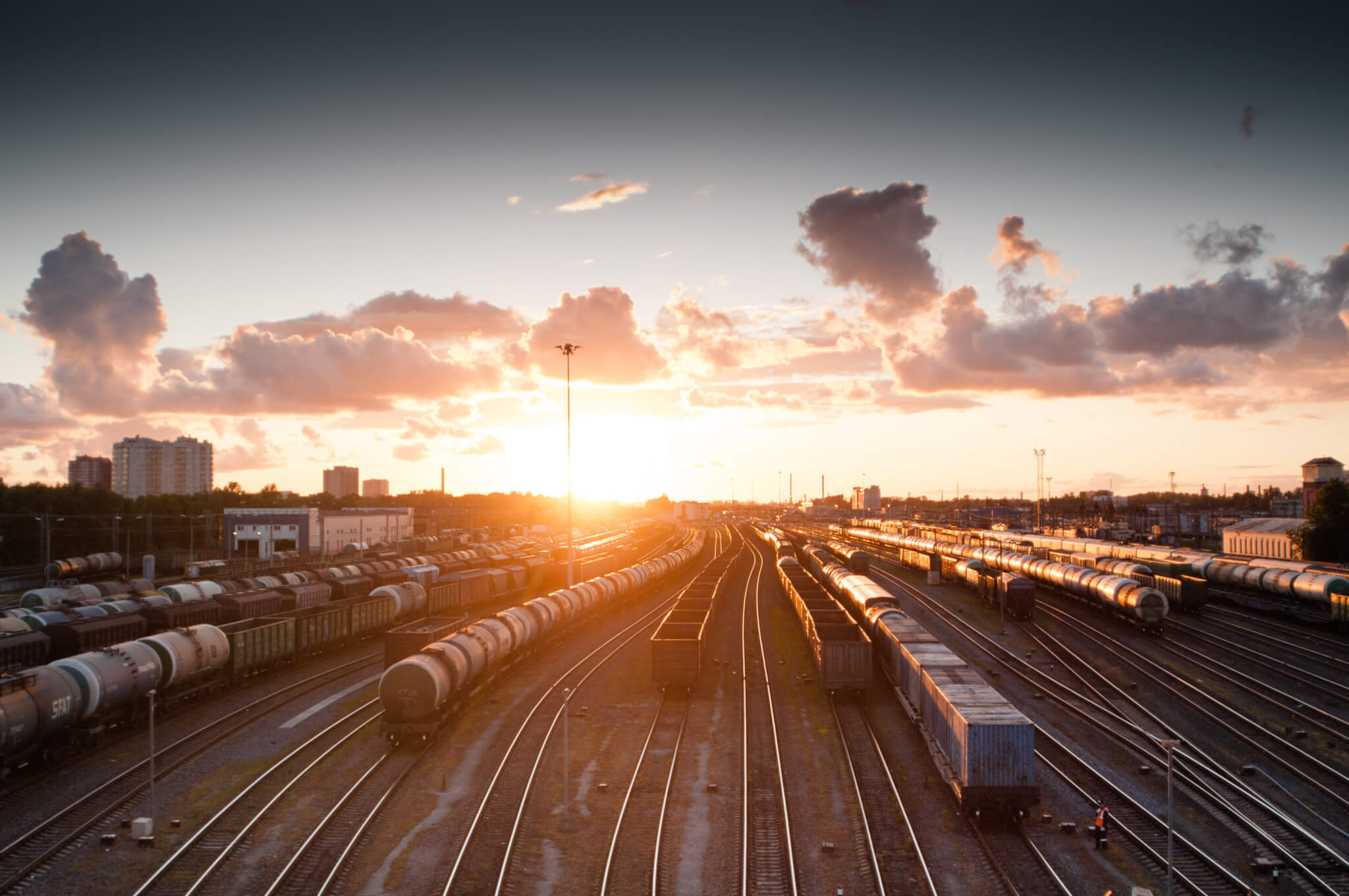How Logistics Companies Work
Logistics companies move things around the world. They include several categories of competitive ecosystems, such as ground, shipping, and air transportation companies that transport both slow-moving bulk and faster-moving on-demand goods. While these industries have different characteristics and competitive priorities, they all operate in a complex, interconnected global system and are dependent upon global economic, technological, and political structures.
Ground transportation includes trucking and rail companies that move goods over land. These companies provide bulk transportation over land routes and final-destination transportation of goods that arrive at other countries via container shipping. Examples of bulk transportation companies are Union Pacific, BNSF, Central Japan Railway, J.B. Hunt, Old Dominion, and DB Schenker. Ground transportation companies also include more fast-paced delivery services and integrated logistics companies such as DHL, FedEx, UPS, CEVA, and Nippon Express.
Shipping companies provide bulk transportation over sea routes. This category includes container shipping, bulk dry goods and raw materials shipping, and oil and gas transportation. The largest shipping companies by 2015 TEU (twenty-foot equivalent unit) capacity are APM-Maersk, Mediterranean Shipping Co., CMA CGM Group, and COSTCO Container Lines. Crude tanker companies include Teekay, Frontline, and Nordic American Tanker.
Source: Alphaliner
Air transportation companies own fleets of aircraft to transport high-priority industrial and consumer items globally. Many air transportation companies, such as FedEx, UPS, and DHL, are integrated logistics companies that also own ground transportation fleets in order to provide end-customer delivery. Pure airfreight companies include Cathay Pacific Cargo, Korean Air Cargo, China Airlines Cargo, and others.
In addition to businesses that own and operate fleets, there are also ecosystems of companies that facilitate global logistics, including dozens of supporting industries and sub-industries. Examples are freight forwarders and forwarding agents that organize shipments for individuals and corporations, supply chain management companies that plan and control logistics movements, tracking and inventory software companies, port and airport operating companies, and a variety of other supporting sub-industries.
Constraints
Logistics companies operate under a number of structural constraints, which limits strategy options for executives.
Pricing Power
Pricing power is a significant constraint for logistics companies that transport items as part of manufacturing supply chains. Companies, of course, have some degree of pricing power with respect to their competitors based on speed, security, availability, and brand. However, there is a natural ceiling to how much companies can charge to transport manufacturing items. That ceiling is a result of the cost variance between buying the item locally and buying it globally. If logistics companies were to charge transportation fees that were greater than the cost variance, buyers would forgo shipping and buy the locally produced item.
This principle also drives the logistics for finished goods to some extent, with the caveat that finished goods have a higher degree of protection based on the uniqueness of the item, e.g., it is more complex to onshore washing machines than pipe fittings. This is an obvious but important concept. If the cost variance between the local and offshore production of a manufacturing subcomponent decreases, the pricing power of the logistics transporting the globally manufactured item also decreases in a corresponding fashion.
The pricing power of logistics companies is correlated with macroeconomic and technological factors that logistics companies can’t control. If advances in additive manufacturing technology, for example, make it cheaper to onshore some types of production, logistics companies will have to adjust the price of transporting those items, or they will no longer be paid to move them.
While pricing power can be squeezed by external factors, costs will remain relatively fixed. To be sure, there are variable costs of moving items that companies do not incur if they do not move, such as fuel, labor, and operating licenses. However, these companies have large fixed costs that often make up the preponderance of their overall cost structures, including aircraft, ships, and facilities. Having fixed costs remain flat while prices are decreasing is generally not a good thing and provides a strategic challenge for logistics companies, especially considering that these are not high-margin companies to begin with.
Source: IHS Fairplay. Note that the Port of Los Angeles is presented for comparison only as the largest American port.
Trade Politics
The politics of trade is also a constraint, as the machinations of global trade deals directly impact the availability and attractiveness of markets for logistics companies. The byzantine networks of multinational trade deals impact logistics companies, positively and negatively, and must be understood. Examples include EEA, EUCU, EFTA, NAFTA, TPP, FTAA, MEFTA, TAFTA, TISA, TTIP, AANZFTA, APTA, SICA, CEFTA, CISFTA, COMESA, EAC, and hundreds of others.
On the other side of trade agreements are trade restrictions and embargoes. The most notable recent American restrictions have involved Russia, Iran, Cuba, Sudan, China, North Korea, and Syria. Global multinational logistics corporations must understand and operate within the constraints of these complex webs of trade deals and embargoes, which shift with global political evolutions. This adds complexity and risk and makes long-term planning difficult, as unanticipated political developments can directly impact the availability and profitability of markets.
Optionality and Competitiveness
Logistics companies are facilitators of global transportation and supply chains, not drivers for those activities. The industry, in the aggregate, is in a secondary or reactive position. Outside of lowering prices, there is very little that logistics companies can do to generate increased requirements for their services. Their position is to react to market conditions that are established by other industries, nations, and global forces.
Strategy for logistics companies is therefore constrained to how to optimally compete with other market participants, as opposed to how to expand the size of the overall market. To be sure, there are degrees of optionality within the logistics industry, as some companies are better positioned and have more options than others. However, the fundamental characteristic of the market is efficiency and internal competition. Outside of new methods of transport, there are few strategic options available to fundamentally change the market dynamic.
Source: Federal Highway Administration, Office of Freight Management and Operations, US Department of Transportation
Source: Federal Highway Administration, Office of Freight Management and Operations, US Department of Transportation
Strategic Imperatives
All companies are different, but there are common imperatives that compel companies who operate in the logistics industry. Similar pressures upon different types of companies can result in wildly different strategies and tactics, but understanding constraints and compulsions helps frame how the industry operates.
1) Increase operating efficiency and margins via capital investments in new ships, aircraft, and vehicles. These investments allow companies the flexibility of increased margins to facilitate profitability and/or lower prices to win business and facilitate competitiveness.
2) Manage risk of overcapacity by limiting capital investments to the forecasted demand. Avoid the catastrophic downside scenario of large capital investments (to facilitate profitability and competitiveness) in excess of customer demand. Fixed cost allocation in this scenario drives up cost structure, lowering margins and potentially causing a damaging debt burden to the business.
3) Accurately project future demand to ensure the proper strategic balance of investment vs. risk mitigation.
4) Diversify geographically and between categories of logistics to mitigate risk of disruption from new technological, socioeconomic, or political catalysts. Technology adoption rates will differ in American, European, and Asian markets, and will likely impact raw materials, subcomponents, and finished goods in different ways and on different timelines.
Join the Catalyst Monitor
Join our community, where we push out regular insights to help maintain situational awareness on technological and socioeconomic trends.



